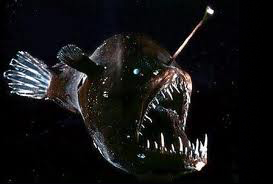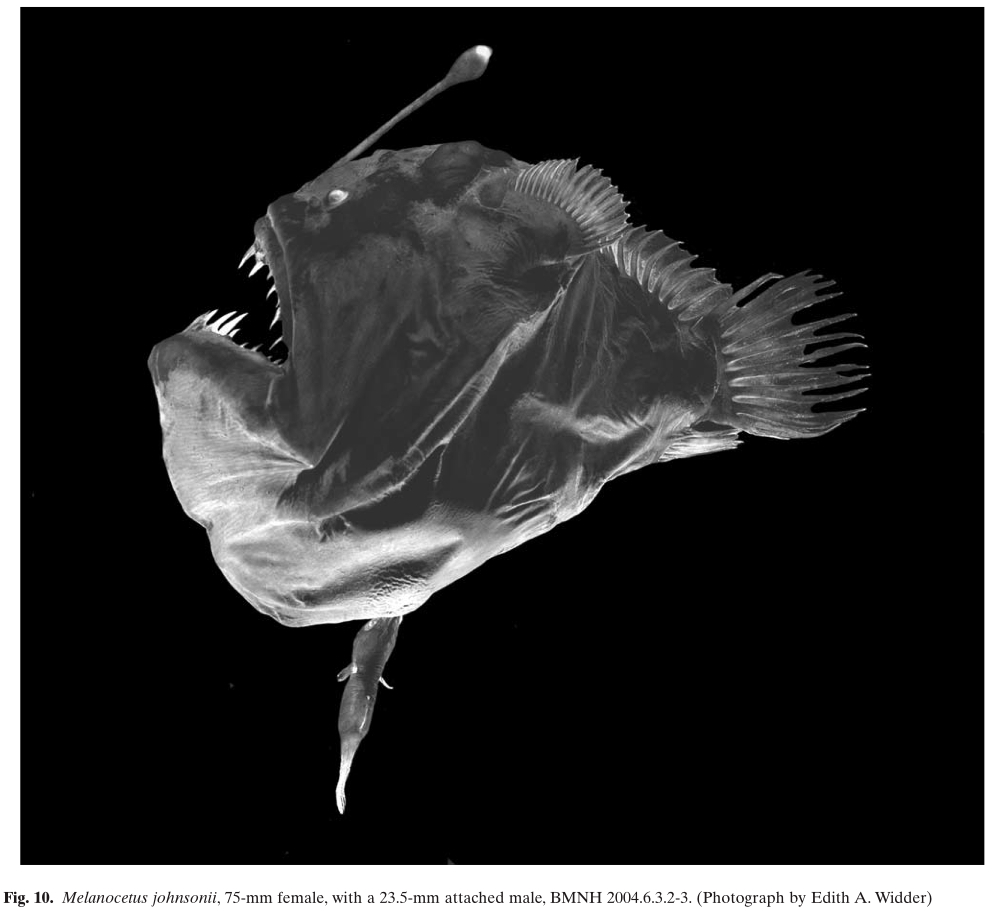
Ceratioid Anglerfish Mating: Sexual Dimorphism and Parasitism
| Home |
| Mechanism |
| Ontogeny |
| Phylogeny |
| Adaptive Value |
| References |
Ontogeny
Sexual Development
In obligitory parasitic species, free-living males and un-parasitized females have never been observed with well-developed reproductive organs. It seems that males never mature sexually unless they have become attached to a female, and, likewise, females will not produce eggs until stimulated by the male parasitic attachment (Parr 1930). Thus, it appears that sexual maturity in these species is not dependent on age or size, as is common in many other vertebrates, but instead by the onset of the parasitic sexual association (Pietsch 2005).
 Foraging and Digestive Development of Free-living Males
Foraging and Digestive Development of Free-living Males
Additionally, as described in "Mechanism," metamorphosed free-living males also fail to develop adequate jaws and digestive tracts to survive independently, further necessitating the parasitic relationship. Males that do not fuse with a female not only fail to reproduce, but will die of starvation within the first few months of their lives (Pietsch 2005).
Genetic Causes of Male (under-)Development
While the physical developmental explanation for this behavior is apparent, little is known about the genetic developmental underpinnings of parasitic mating behavior. Future research focused on identifying genes enabling reproductive and digestive development could give mechanistic clues as to why males are unable to develop fully when free-living, and thereby begin to elucidate the genetic causes of obligate parasitism.
Lauren Carley, Jessie Ellington, Michael Turvey. 2010.